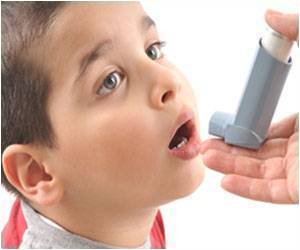Highlights
- Dust commonly found in homes contains higher levels of harmful chemicals
- A meta-analysis conducted in the United States found top ten toxic chemicals in household dust
- Phthalates were found at the highest levels in dust followed by phenols and cancer-causing chemicals
Hazardous Chemicals in Dust
The meta-analysis showed that di(2- ethylhexyl) phthalate (DEHP), a chemical that belongs to the hazardous class called phthalates topped the list. Phthalates were found at the highest levels in dust followed by phenols and flame retardant chemicals.Harmful Effects of Dust
Dust particles can be visible or invisible, but the type and size of a dust particle determine the toxicity of the dust. The amount of dust present in the air and duration of exposure determine the possible harm the dust may cause. Some of the harmful causes of dust are
Chemicals released into the air, get into dust and settle on household items and floor. Dust enters the body through inhalation or absorption of dust through the skin. Infants and young children are at higher risk for exposure to chemicals found in the dust because they crawl and play on the floor.
Toxic Chemicals
The researchers analyzed data from 26 peer-reviewed papers and one unpublished data that analyzed dust samples taken from homes in 14 states in the US. The analysis showed that there were 45 potentially toxic chemicals that are used in consumer and household products such as beauty and personal care products, cleaning products, vinyl flooring, building materials and home furnishings. The authors said that “the meta-analysis combines information from smaller dust studies and thus offers solid conclusions with greater statistical power.”
The study found that the levels of phthalates were high with a mean of 682 nanograms per gram of dust. Phenols, used in cleaning products were the second highest chemical class with higher concentrations followed by flame retardant chemicals and fluorinated chemicals used to make non-stick cookware. Flame retardant chemicals are present in baby products, electronics, couches and other household products.
Four classes of phthalates found in the highest concentrations in dust are associated with many serious health hazards. Phthalates are known to cause respiratory problems in children and decline in IQ levels.
Fluorinated chemicals such as a Perfluorooctanoic acid (PFOA) and Perfluorooctanesulfonic acid (PFOS) are found in high concentrations in pizza boxes, cell phones, and non-stick, waterproof and stain-resistant products. These chemicals lower immunity and affect digestive and endocrine systems.
Chemicals in dust are linked to cancer development and reproductive toxicity. Exposure to even small amounts of such chemicals in dust can cause serious health complications, especially in infants, and young children.
Veena Singla, PhD, staff scientist at the Natural Resources Defense Council, co-author of the study, said, "The number and levels of toxic and untested chemicals that are likely in every one of our living rooms was shocking to me. Harmful chemicals used in everyday products and building materials result in widespread contamination of our homes—these dangerous chemicals should be replaced with safer alternatives."
Robin Dodson, an environmental exposure scientist at Silent Spring Institute, said, "Consumers have the power to make healthier choices and protect themselves from harmful chemicals in everyday products. These things can make a real difference not only in their health but also in shifting the market toward safer products."
The meta-analysis, "Consumer product chemicals in indoor dust: a quantitative meta-analysis of U.S. studies," is published in the journal Environmental Science & Technology.
Tips to Keep Dust Levels Low
People should take a few simple steps to reduce their exposure to chemicals in household dust and the environment.
- Sweep and mop the house regularly
- Use a strong vacuum to clean carpet and upholstery
- Wash hands frequently
- Clean floors, furniture, window frames and sills with a damp cloth
- Avoid using products that contain harmful chemicals
- Health effects of dust - (http://healthywa.wa.gov.au/Articles/F_I/Health-effects-of-dust)












